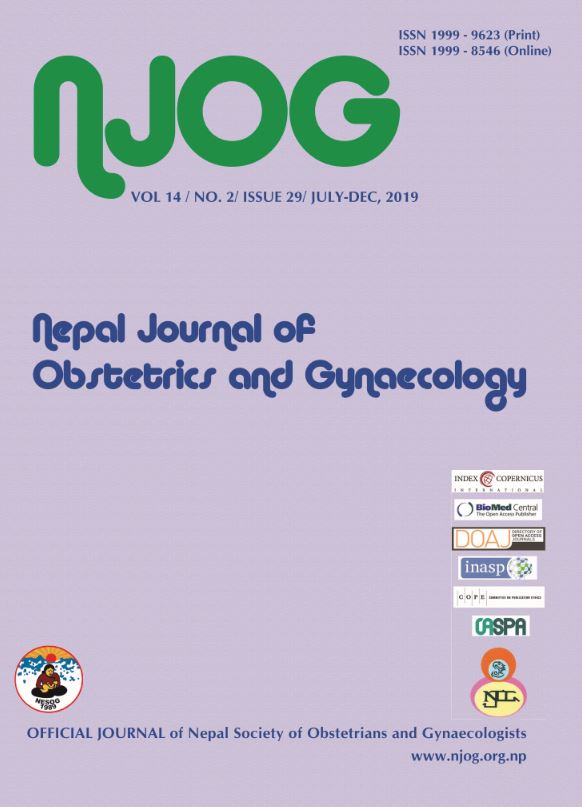Asymptomatic bacteriuria in pregnancy
Keywords:
asymptomatic bacteriuria, pregnant women, urinary tract infection, urine cultureAbstract
Aims: To estimate the prevalence of asymptomatic bacteriuria, its causative agents and their antimicrobial susceptibility pattern; and to determine the relationship of asymptomatic bacteriuria and pyuria in pregnant women.
Methods: A cross sectional study was conducted in a total of 240 asymptomatic pregnant women in Paropakar Maternity and Women’s Hospital from August 2016 to January 2017. Clean catch midstream urine samples were collected from each participant. Urine samples were cultured using standard microbiological methods. Identification of isolates and antibiotic sensitivity testing were done.
Results: Out of 240 pregnant women, 17 (7.1%) were positive for asymptomatic bacteriuria [colony forming unit (CFU) >10 5 /ml]. There was no any significant difference in the prevalence of asymptomatic bacteriuria with respect to age, gestational age and parity. The prevalence of asymptomatic bacteriuria was significantly different with respect to education level (p=0.01) and number of pus cells in urine specimen (p=0.04). The most frequently isolated microorganisms were E.coli (70.6 %) followed by Klebsiella spp (11.8%). Ciprofloxacin followed by Nitrofurantoin and Norfloxacin had the highest sensitivity to all the isolates.
Conclusions: Asymptomatic bacteriuria is common in pregnancy. Routine urine culture should be done on all pregnant women to detect asymptomatic bacteriuria. Treatment should be based on antimicrobial sensitivity pattern due to increased antibiotic resistance to commonly used antimicrobial agents.
Downloads
Downloads
Published
How to Cite
Issue
Section
License
Copyright on any research article in the Nepal Journal of Obstetrics and Gynaecology is retained by the author(s).
The authors grant the Nepal Journal of Obstetrics and Gynaecology a license to publish the article and identify itself as the original publisher.
Articles in the Nepal Journal of Obstetrics and Gynaecology are Open Access articles published under the Creative Commons CC BY-NC License (https://creativecommons.org/licenses/by-nc/4.0/)
This license permits use, distribution and reproduction in any medium, provided the original work is properly cited, and it is not used for commercial purposes.



